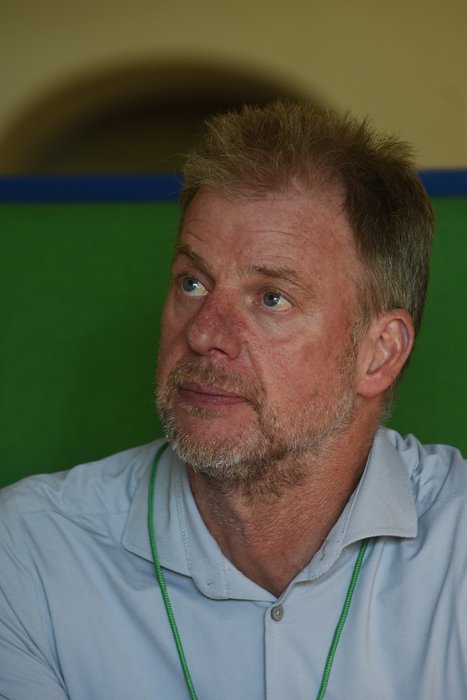We should challenge the dogmas: A Conversation with Hubèrt van Hees
By Shaila Ann Sigsgaard
In the realm of modern pig farming, nutrition is no longer just about growth - it's about resilience, health, and sustainability. Dutch scientist Dr. Hubèrt van Hees has spent nearly three decades pushing the boundaries of swine nutrition research. In this interview, that took place at the PIG-PARADIGM’s annual meeting 2025, he offers a deep dive into functional pig nutrition, antibiotic reduction, and how nature may be the key to revolutionizing animal husbandry.
“Specifically in nurseries and piglet management, we see that most antibiotics are used. That's a worldwide phenomenon,” Van Hees begins. This reliance poses serious concerns - not just for animal health, but also for human safety due to antimicrobial resistance. As Van Hees explains, the key lies in collaborative, cross-disciplinary research.
Projects like this, the Novo Nordisk funded PIG-PARADIGM, aim to reduce the sector’s dependence on antibiotics. “We hope to find, together with experts from different university groups, approaches that help us be less dependent on antibiotics in animal production.”
Van Hees’s career spans 30 years, including research and development roles and a PhD from Ghent University under the guidance of leading professors in pig nutrition. His scientific passion is clear: supporting pig health through nutrition that targets immune strength and gastrointestinal development.
Today, he leads a specialized swine nutrition research team, working at the interface of science and farming practice. The focus?
“We also have an important sow nutrition program with a focus on transition and lactation nutrition to support the sow in giving birth to vital- and well-nourished piglets. Optimizing diets that strengthen piglets from birth through weaning—especially in the critical first six weeks.”
Feeding piglets for health, not just growth
One of Van Hees’s central beliefs is that piglets’ diets must meet their developmental needs exactly—no more, no less. His research emphasizes the importance of:
- Encouraging piglets to consume feed early.
- Promoting the maturation of the digestive tract, particularly the stomach.
- Identifying the specific nutrient requirements of young pigs, a surprisingly under-researched area.
The team partners with universities to investigate these needs, generating data that informs better feeding strategies and, ultimately, healthier pigs.
Although Van Hees avoids the term "industry," he acknowledges the economic realities of farming. “Farming means maintaining a large herd, keeping them well, and doing it in a way that provides income for the farmer.” For him, this is best achieved by providing precisely tailored nutrition that minimizes illness and maximizes welfare.
So what can nature teach us about raising healthy pigs?
“We should challenge the dogmas,” Van Hees says, referring to the rigidity often seen in commercial feed formulation. By examining the diets of wild piglets, his team has discovered that even at a young age, they consume fibrous, coarse foods - a stark contrast to the finely ground, low-fiber commercial diets most piglets receive today.
Inspired by nature, Van Hees’s team is experimenting with:
- Fiber-rich diets containing coarse particles.
- Nutrition that stimulates stomach development early on.
- Formulations that support a robust immune system and gut health.
Early results are promising. “We already see that the stomach is healthier and better developed. It’s less at risk for issues like ulceration.”
The PIG-PARADIGM project exemplifies how research can inform broader policy. By unraveling the causes of post-weaning diarrhea - a major health and economic concern - we hope to improve piglet well-being and reduce antibiotic usage.
Crucially, Van Hees emphasizes the need for policymakers, veterinarians, and producers to stay informed: “The ambitions are high here at PIG-PARADIGM, and the science is strong. The sooner we bring it into practice, the faster we can reduce antibiotic dependency.”
